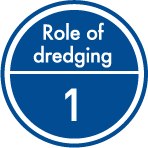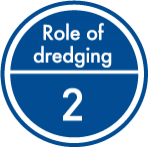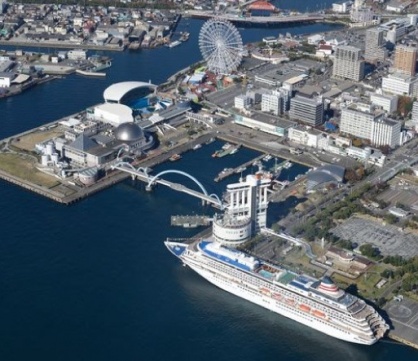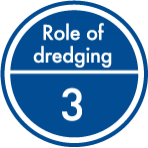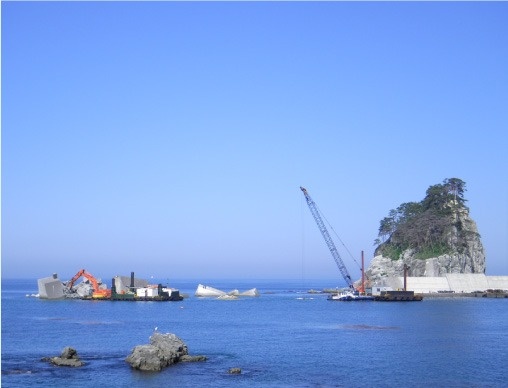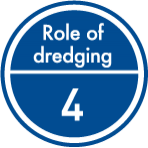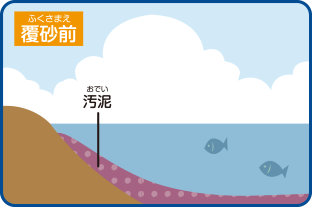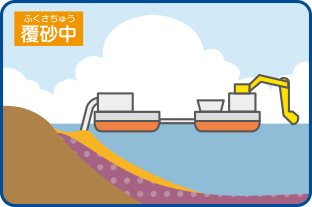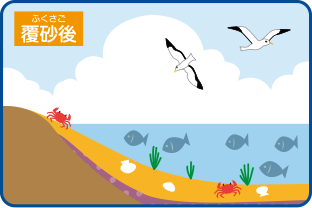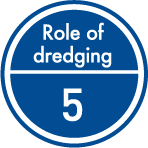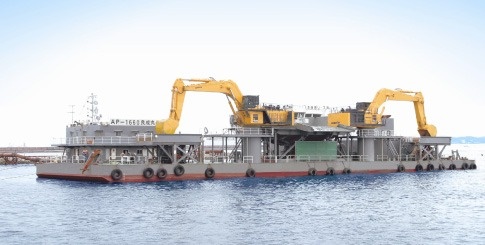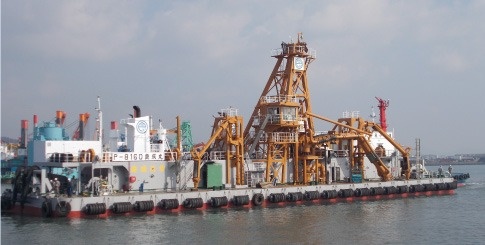Dredging secures necessary water area and depth of channel, basin and berth by excavating seabed.
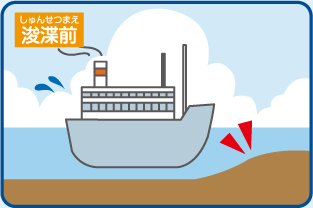
Sediment in seabed blocks navigation of large vessel.
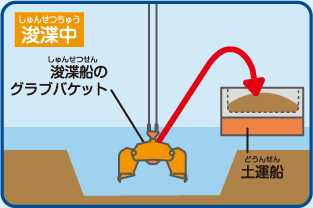
Dredge channel and basin.
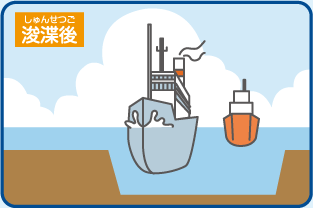
Dredging expands and deepens channel.
Recently container ships are getting larger. Especially International strategic ports and hub ports are required to expand channel for larger vessel's safe navigation. That increases the importance level of "dredging". In dredging, operation has to be done without suspending any port's function. Because of KOJIMAGUMI's unique technology and know-how, no suspension is necessary in navigation.

